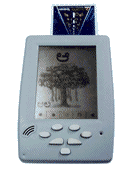In 2003, I bought a new GM vehicle. One of the options I added was the OnStar system. The problem is that the technology they used on the vehicle relied on the 24-year-old analog cell phone network, established back in the day of 'luggable' cell phones. As of Jan 1st, 2008, the OnStar system in my vehicle will no longer work due to the FCC reallocating the frequency spectrum used by the legacy analog system. All services which rely upon analog cell phone systems must be shut down by Feb '08. Others affected by this changeover are those which subscribe to wireless security systems.
Everyone who relies on over-the-air (terrestrial) signals will be also be affected by the FCC mandated analog-to-digital transition of legacy analog television signals occurring Feb '09. One would think there are few households in this age of cable and satellite TV that still rely upon over-the air signals. Some estimates place the number of US households still relying upon over-the-air signals at around 15% (I still do as a backup during rain fade periods). I am also surprised by the number of people I talk to that still do not know what this transition may mean to them. Over the holidays, I must have explained the digital TV change a half dozen times to those in the 'older' generation.
No matter how much prior notice is given to the consumer, the transition from analog-to-digital technologies is painful to many. There are new concepts to be learned, and explained. There are new hardware and software investments to be made. Many wonder why the transition is needed to begin with when what they have used for decades seem to work just fine.
If one were to draw a comparison between changes in consumer technology to those in library technology, one begins to understand why the transition from an analog librarianship to a digital librarianship has also been painful to many in the profession. There are new concepts to be learned, and explained. There are new hardware and software investments to be made. Many wonder why the transition is needed to begin with when what they have used for decades seem to work just fine.
Sphere: Related Content
OJS Features
- OJS is installed locally and locally controlled.
- Editors configure requirements, sections, review process, etc.
- Online submission and management of all content.
- Subscription module with delayed open access options.
- Comprehensive indexing of content part of global system.
- Reading Tools for content, based on field and editors' choice.
- Email notification and commenting ability for readers.
- Complete context-sensitive online Help support.
 information from the web with data on he device such as contacts, calendar, or GPS location to provide a customizable user experience. Since Android will be open source; it can be extended to incorporate technologies as they emerge.
information from the web with data on he device such as contacts, calendar, or GPS location to provide a customizable user experience. Since Android will be open source; it can be extended to incorporate technologies as they emerge. to create an open computer where all of the specifications are available and there are no restrictions upon its use.
to create an open computer where all of the specifications are available and there are no restrictions upon its use.


